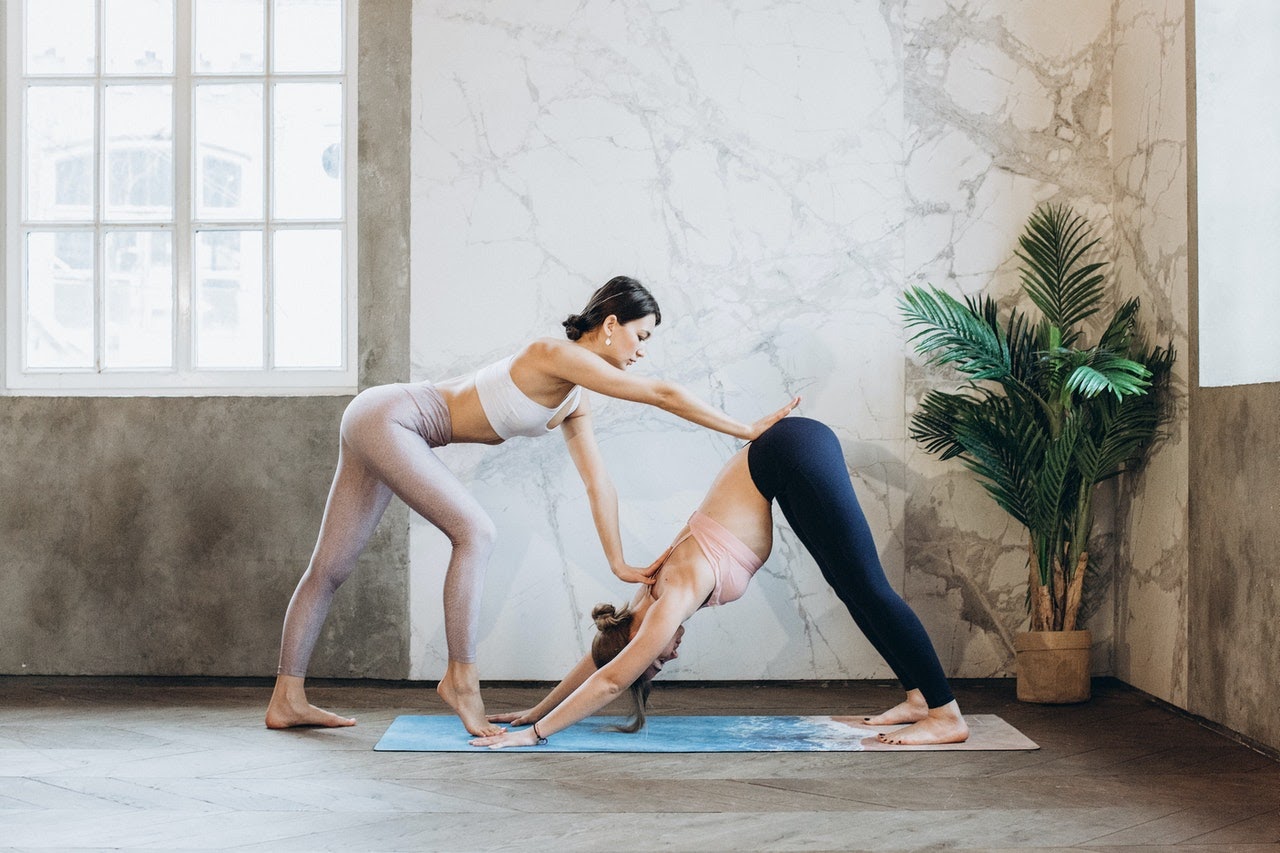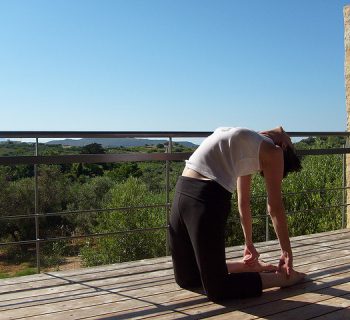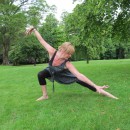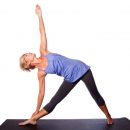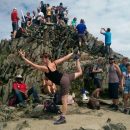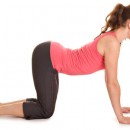In 2010 I seriously injured my back by slipping 4 discs. I don't take pain killers so things were tough. I tried so many different things to relieve the pain but every day was a drag. Sitting, walking, or lying gave me pain. Then I found Yin Yoga. In just 3 weeks of daily practice my back pain was reduced by 40%. I was able to function as a normal human being again. So here is a little guide for those of you that have not yet some across Yin Yoga.
WHAT IS YIN YOGA?
An ultra-slow practice with multiple benefits for the mind, Yin Yoga is a mix of yoga and meditation. Very simple to do at home or elsewhere, it allows daily breaks to relax and let go. How to practice it and what are its effects on our body?
Popularized by Paul Grilley in the 90s, Yin yoga is gentle yoga. Although quite recent, this practice is inspired by ancestral yoga. Stemming from Taoist thought, the idea of Yin represents immobility and Yang represents movement. With Yin yoga, the objective is therefore to slow down and have a meditative approach. Contrary to most other yogas, there is no desire to strengthen muscles. We simply remain in immobile postures without trying to improve our endurance.
At the mental level, one must accept all the emotions and sensations that come with holding the different postures. They must be stable and comfortable. We are not in performance. If Yin Yoga is more and more in vogue, it's probably because the need to slow down is a necessity in our thousand-hour society.
THE BENEFITS OF YIN YOGA
If we do not (or at least not voluntarily) stress the muscles, we strengthen the joints, tendons, ligaments, and therefore flexibility. We also circulate energies. As with meditation, one learns to listen to oneself and thus to know oneself better. The goal? To meet each other and to face our emotions. In the end, we achieve maximum relaxation, letting go, and full self-awareness. What if you can't clear your head at the time of the session? No problem. We can see our ideas jostling around without judging the path of our thoughts.
The benefits are numerous because Yin Yoga is magic!
- The gain in flexibility and mobility
- Slow down the aging of bones and joints
- Soothe the mind
- Rest the body and regenerate it in depth.
- Detoxify the body
- Improve sleep
- Relieving stress
- Clarifying thoughts
- Releasing blocked emotions
- Releasing muscle tension
HOW TO PRACTICE YIN YOGA?
We practice different postures according to the desired effect (detox, anti-burn out, lumbar pain...), which we hold for between 3 and 5 minutes each. To practice Yin Yoga well, there are four rules:
- 1. Relax your muscles completely.
- 2. Feel (without trying to put a particular intention as with stretching. Be careful, the feeling does not mean suffering. As soon as the slightest pain occurs, you improve your posture to be better)).
- 3. Remain motionless.
- 4. Stay for a long time.
WHAT ARE THE PRINCIPLES OF YIN YOGA?
THE ENERGETIC BODY :
- There are 12 energy meridians in the body, each associated with the pairs Yin and Yang.
- To these 12 are added 8 extraordinary meridians called vessels.
- Each meridian is associated with an emotion and a chakra, which makes it possible to perform extraordinary work when building a session of yin yoga targeted according to what you want to work on.
HERE IS THE LIST OF MERIDIANS AND THEIR EMOTIONAL BENEFITS AS WELL AS THE CHAKRAS TO WHICH THEY ARE LINKED:
Kidney, bladder (wisdom and gentleness versus deep fear and grief blockage): 1st and 2nd chakra
Rate-Pancreas (loyalty and creativity versus worry, difficulty in making decisions and excessive thinking): 3rd chakra
Gallbladder (courage and determination versus indecision, fear): 3rd chakra
Stomach (sympathy and compassion versus paranoia and nervousness): 3rd chakra
Liver (compassion versus anger): 2nd and 3rd chakras
Heart (right intention versus restlessness, insomnia, difficulty to communicate): 4th chakra
Péricarde, heart minister (protection of the heart versus heart palpitations, pain): 4th chakra
Small intestine (separates the pure from the impure versus stomach pain, constipation, and diarrhea): 2nd, 4th, and 6th chakras
Triple warmer (regulates water versus lack of appetite, fever, difficulty breathing): 1st, 2nd, 3rd and 4th chakras
Lungs (feeling of completeness versus hysteria, nostalgia): 5th chakra
WHERE TO PRACTICE YIN YOGA?
At home
If there are indoor or center-based classes, you can do Yin Yoga alone at home. All you need is to find a place that is quiet and where it is warm enough (relaxation cools the body). We cut off the telephones so as not to be disturbed, we put on a soft light and comfortable clothes (not too tight). Material level, we need a yoga mat, a timer, a blanket, and a bolster to facilitate certain positions.
Some people prefer yin yoga in silence, but there is also the possibility of being accompanied by music without speech. The particularity of this yoga? It can be done anywhere, anytime. As it is not sporty, it is one of the rare yogas that is not inadvisable after a meal.
WHEN TO PRACTICE YIN YOGA?
There is no best time to practice Yin Yoga except to prefer more active and intense activities before the Yin session. I will therefore advise you at the end of the day, after work or before going to bed or in the morning or during the day if it is your day off. The calmer you are after your Yin Yoga session, the more you will enjoy the benefits of it.
WHAT EQUIPMENT DO YOU NEED TO PRACTICE YIN YOGA?
- A yoga mat
- Very comfortable and warm clothes because when you practice Yin Yoga your body will get cold once you relax and you may feel cold. Put on socks and a little wool!
- A bolster, a strap, and or two yoga blocks (bricks) to assist your practice.
- A blanket for final relaxation.
HOW IS A YIN YOGA SESSION BUILT?
EXAMPLES OF SEQUENCING OBJECTIVES :
- Target a part of the body (back, hips)
- Target a meridian (large intestine, heart)
- To balance an emotion (anger, insomnia)
TIP:
What's great about Yin Yoga is that the floor bending postures will work virtually all of your meridians. You don't need to be a Yin Yoga expert to know exactly which posture corresponds to which meridian or emotion.
- Select 5 or 6 forward and backward bending postures (which you will hold in 3 and 5 minutes) and abracadabra you have a total yin yoga session! When the posture is done on both sides count 3 or 5 minutes on each side.
- Add 5 minutes of seated meditation to start.
- Finish your session with a good relaxation of 10 minutes (5 minimum in Savasana: lying down, feet apart from the width of the mat, arms away from the body, palms facing the sky).
- Try to put in postures called welcoming postures, i.e. the transition between each posture: for example 1 minute lying down or 1 minute as a happy child. Welcoming postures also act as a counter posture to soothe the body in contrast to the posture it has just done.
So the next step is to add a reminder in you calendar to do a small practice every day. Good Luck.


